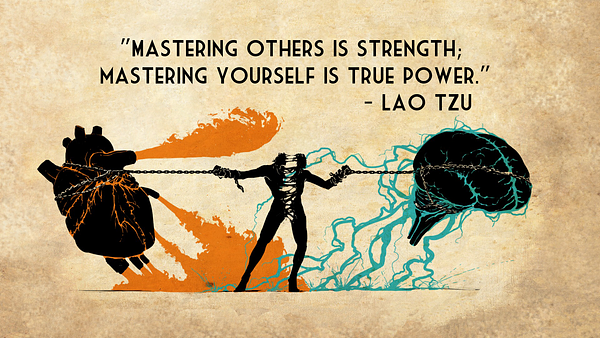
“The secret of success in life is to be ready for opportunity when it comes.” — Benjamin Disraeli
Myelination
At birth, our neurons are like exposed live wires. Initially, there is no insulation on these neurons, which aids electrical transmission.
As we age, a fatty white substance called Myelin coats the neurons forming an insulating layer.
The production of a myelin sheath (like the white insulation on a copper live wire) is called myelination.
During infancy, myelination occurs quickly, leading to a child’s fast development, including crawling and walking in the first year. This week’s guest on the innovation show Dr Larry Rosen tells us myelination is why we cannot potty train children until they are two years old, because the neural pathway to their bowels and bladder is not yet myelinated and the signal from their brain does not travel there fast enough.
Myelination continues through our adolescent stage of life. The last area of the brain to be myelinated is the pre-frontal cortex. Myelination is not completed in our pre-frontal cortex until our mid to late 20’s. This is why younger people can act more impetuously in their earlier years.
I have often heard that the physical shape you are in when you are 30 is the shape you will most likely keep for the rest of your life. While many middle-aged dad bods will attest that is not always the case. When I read about myelination, I thought it may explain this notion.
Myelination is like a seal of approval of a certain neural pathway and the way things are “done” in that neural pathway. If we think of the neural pathway as the facilitator of a learned habit, then perhaps myelin seals that habit, akin to cement in a foundation. This would suggest that the shape you are in when you are 30 is actually, the habit that you have honed by the age of thirty and that this habit has been “sealed” with myelin and “written in stone”.
The Basal Ganglia
Our habits are stored in the brain in our Basal Ganglia. Almost 50% of what we do every day is driven by habit. Even when we enjoy new experiences, create new connections and digest new information eventually we will become habituated to these after a while.
Think of when you started your current job or learned any new skill. Neural connections are sparked to life and while it is initially challenging, it is also literally quite stimulating.
Fast forward 12 months when we have “settled in” to our new roles. We have adapted to the corporate culture, we behave as the company culture dictates we should do. We have found: our favourite local coffee shops, places to have lunch, the ideal route to work, morning routine. By this time, the basal ganglia reigns supreme, it is running the show.
When we grow accustomed to anything in life it becomes difficult to change. Most interestingly, the more entrenched our habits or neural circuits become, the more our minds resist new ideas. This happens as we age and we end up stuck in a routine. It has been proven that new experiences in relationships for example, such as new restaurants, experiences etc. leads to releases of dopamine and endorphins and thus keeps the relationship fresh and exciting.
The Window of Opportunity
Definition and origin of window (n.) c. 1200, Replaced Old English eagþyrl, literally “eye-hole,” and eagduru, literally “eye-door.”
Definition and origin of opportunity (n.) c. 1400 from Old French opportunite and directly from the Latin opportunitatem “fitness, convenience, suitableness, favorable time,”
Consider the following. When we are lucky enough to hire a great new recruit it is a huge opportunity to glean valuable insights from them. The window of opportunity to do this is brief. We must delicately balance the new recruit being there long enough to gather quality information about the operation and the new recruit not being there long enough to suffer from what I call corporate myelination.
Corporate Myelination is where the new recruit had initially identified a raft of things they would change, but then become accustomed to the modus operandi and settle to focus on their own job instead of improving the company.
Really good team members, leaders, change makers just can’t help themselves, they want to improve everything around them. They want to help colleagues, they want to drive efficiencies. even when it is not in their job description. This enthusiasm will not last long, this is their livewire active just before myelination and when honed, this can give you hugely valuable information.
Reverse Onboarding
Onboarding is also known as organizational socialization. It is essentially the process of informing a new hire of “the way we do things ‘round here”. It is the process of integrating a new employee into the organization and its culture. The new hire gets immersed in the processes, procedures and behaviours of their new company. Incredibly, the new hires rarely get told why the company exists, but rather how and what the company produces.
Reverse Onboarding is a term that I would like to introduce. To commit to a reverse onboarding session takes a lack of ego, a large helping of humility and a very open mind. We must park our biases that this is a new recruit and most likely a lot more junior than you as a leader.
Here is how it goes…
You schedule a reverse onboarding session with your new recruit. You tell them when they join that you will be doing this session with them in 4–6 weeks and you want them to report what they would do differently, how they might improve processes and what they see that you do not see (a business Johari window of sorts).
This information is vital, this is a report from the trenches. This information may be as valuable as (or more valuable than) information you would pay a top consulting firm to uncover.
“We should never pretend to know what we don’t know, we should not feel ashamed to ask and learn from people below, and we should listen carefully to the views of the cadres at the lowest levels. Be a pupil before you become a teacher; learn from the cadres at the lower levels before you issue orders.” — Mao Tse-tung
To absorb the information can prove to be the most difficult part. During the reverse onboarding session, we must demonstrate level 5 leadership skills. We must listen without being defensive, we must enquire with inquiring, we must remove our ego.
Finally, to demonstrate we live our values, we must act on the information received, while the window of opportunity is still open.
THANK YOU FOR READING, PLEASE HIT A CLAP SO OTHERS WILL SEE THIS
On this week’s innovation show.
“It is time we focus less on our hardware and more on our humanware.” — Larry D. Rosen PhD
EP 98: The Distracted Mind, Attention, Focus, iDisorders with Larry D. Rosen PhD
Dr Larry Rosen is the best-selling author of multiple books including ones we will talk about today: iDisorder and The Distracted Mind, which touch on the disorders we are experiencing, amplified by technology and why we are behaving the way we do.
We talk:
The state of distraction
The increasing anxiety experienced
iDisorders and how anxiety has surpassed depression and the no.1 disorder for the youth
Why we keep checking our phones
The tools and strategies to counteract poor attention and focus
Sleep deprivation and sleep debts
How napping is not enough
Strategies to sleep better
The attention economy and social networks
How parents can counteract iDisorders
The multitasking myth
Instant gratification in children
The challenge of single screening
Have a listen:
Website http://bit.ly/2FwsOJw
Soundcloud https://lnkd.in/gBbTTuF
Spotify http://spoti.fi/2rXnAF4
iTunes https://apple.co/2gFvFbO
Tunein http://bit.ly/2rRwDad
iHeart Radio http://bit.ly/2E4fhfl
More about Larry Rosen and his books here:


